Top 7 Most Beautiful Historical Sites in Kenya
Take your vacation to Kenya to the next level by visiting famous tourist destinations in favor of a deeper dive into the country's rich history and culture. ... read more...This country has many destinations for every history lover, from historic forts to fascinating caves to urban cores. Here are the 7 most beautiful historical sites in Kenya.
-
Koobi Fora largely refers to the area surrounding Koobi Fora Ridge, which is located on the eastern coast of Lake Turkana in the nomadic Gabbra homeland. The ridge is composed primarily of Pliocene/Pleistocene sediments. It is made up of claystones, siltstones, and sandstones, which have preserved many fossils of terrestrial mammals, including early hominin species. A number of ephemeral rivers that pour into the northeast portion of present Lake Turkana are currently eroding the ridge into badlands topography. Richard Leakey created the Koobi Fora Base Camp in 1968 on the Koobi Fora Spit, a wide sand spit jutting into the lake near the ridge.
As a result, the Kenyan government designated the area as Sibiloi National Park in 1973, building a headquarters for the National Museums of Kenya on Koobi Fora Spit. The reserve is well-kept and well-protected by friendly but armed park police. The preservation of areas, particularly wildlife, is a top priority. The Koobi Fora Research Project (KFRP), which interacts with a variety of interesting colleges and individuals from around the world, continues to explore and excavate.
Previously, the term Koobi Fora was used to refer to one or two early sites or the sand spit. Today, it can refer to any or all locations inside Sibiloi National Park. East Turkana has also come into use with a broader meaning.
Location: the northeastern shores of Lake Turkana, Kenya
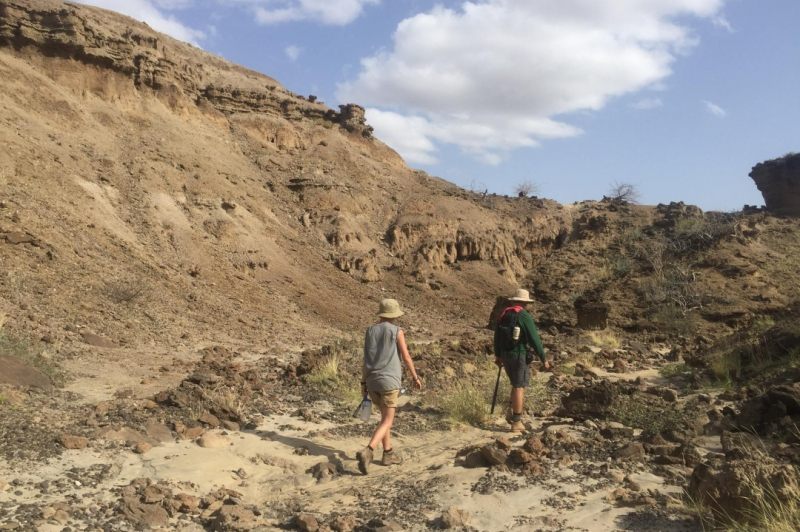
Photo: anthropology.columbian.gwu.edu Video: Planet Forward -
As one of the most beautiful historical sites in Kenya, Hell's Gate National Park is located in Kenya, northwest of Nairobi, south of Lake Naivasha. Hell's Gate National Park takes its name from a narrow gap in the rocks that was originally a stream of an ancient lake that fed early humans in the Rift Valley. It was founded in 1984. It is a tiny national park recognized for its diverse species and scenic beauty. This comprises the columns of Fischer's Tower and Central Tower, as well as Hell's Gate Gorge. At Olkaria, the national park also has five geothermal power stations. The park has three modest campsites and a Maasai Cultural Center, which teaches about the Maasai tribe's culture and traditions.
Hell's Gate National Park takes its name from a narrow gap in the rocks that was originally a stream of an ancient lake that fed early humans in the Rift Valley. In 1883, explorers Fisher and Thomson named it "Hell's Gate". Mount Longonot erupted in the early 1900s, and ash can still be felt surrounding Hell's Gate. The park was officially opened in 1984.
Hell's Gate National Park is 68.25 square kilometers (26 square miles) in size, which is modest by African standards. The park is located at an elevation of 1,900 meters (6,200 feet) above sea level. It is located in Nakuru County, near Lake Naivasha, and about 90 kilometers (56 miles) from Nairobi. The Hells Gate Gorge is located within Hell's Gate and is flanked by red cliffs that contain two volcanic plugs: Fischer's Tower and Central Tower.
The park is popular because it is close to Nairobi and has lower park fees than other National Parks. The park has three simple campsites; camping is safe in the park despite the lack of guns or fencing between you and wildlife. There are also various lodges in the Naivasha Lake area, which are popular with tourists for watersports, bird, and wildlife viewing in private ranches, and walks along Crescent Island, Crater Lake, and Mt. Longonot.
Location: Rift Valley Province, Kenya
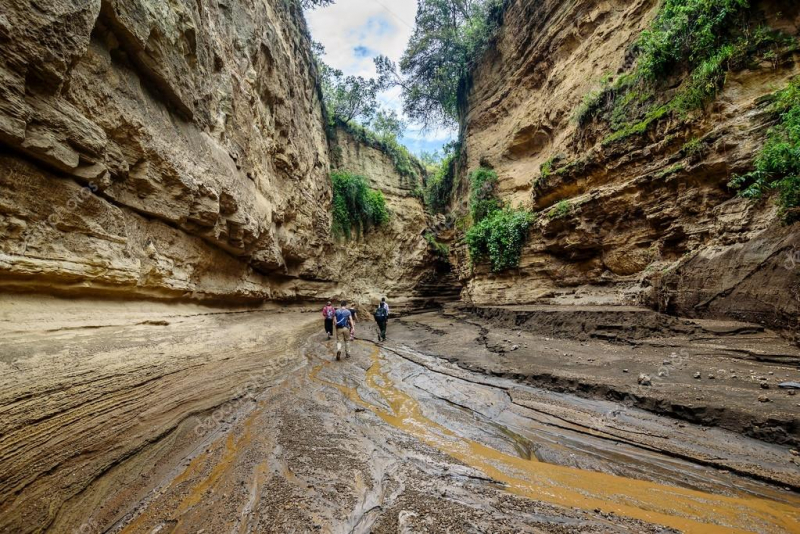
Photo: depositphotos.com Video: All Day Amar -
The Nairobi Railway Museum is a railway museum located next to the Nairobi railway station in Nairobi, Kenya. Regarded as one of the most beautiful historical sites in Kenya, the Nairobi Railway Museum was opened in 1971 by East African Railways and Harbours Corporation and has artifacts from the former East African Railways. Kenya Railways operates it.
The Nairobi Railway Museum, which opened in 1971, attempts to preserve the history of railway construction in East Africa by conserving and displaying artifacts and early records from the time. Historic steam locomotives from the heyday of the steam engine will be on display. It was founded to preserve the Meru indigenous people's traditional culture and customs.
The museum's train connection has been maintained. This facilitates the easy movement of museum displays for maintenance and the addition of objects to the collection. Within the main railway works, the three functioning steam locomotives are securely stored undercover. To view them, visitors must make an appointment. They haven't been utilized in a long time. Out of Africa, a 1985 film, used one of the display locomotives, 301 (2301).
A miniature railway was erected in January 2011 to increase activity at the museum. Previously, this miniature train was used to advertise Kenya Railways (KR) at fairs such as the Nairobi Show. It is made up of a locomotive with a gasoline engine and several wooden cars.
Location: Station Road, Nairobi, Kenya
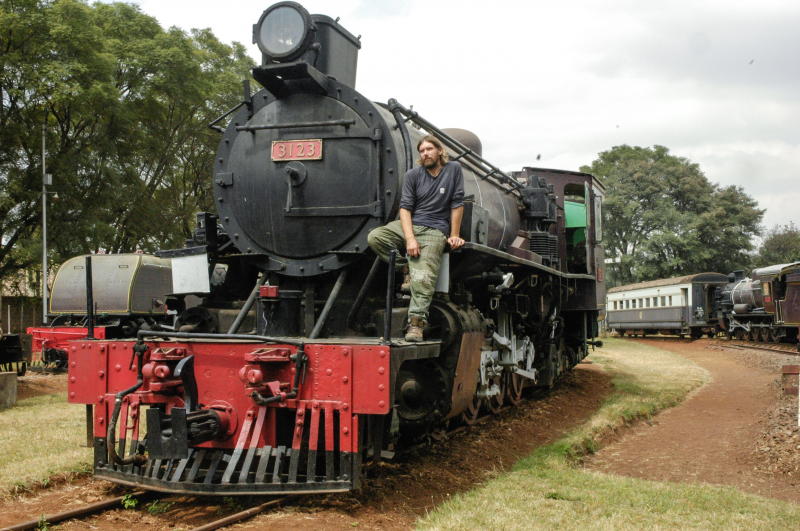
Photo: commons.wikimedia.org Video: Carol Kuyo -
Shimoni Slave Caves in Kwale County are living evidence of the sad days of slavery on the East African coast. Shimoni Slave Caves, located in a tranquil seaside community 70 kilometers south of Mombasa on the Mombasa-Lunga Lunga route, was utilized as a waiting pen for abducted slaves from the interior before anti-slavery crusaders put a stop to human trafficking two centuries ago.
Tour guides eloquently convey to guests their families' tragic narrative, pointing out how slave lords packed their victims onto waiting dhows before ferrying them away. Captured slaves from local communities were first transferred to the principal slave markets in Mombasa, Bagamoyo, Kilwa, Zanzibar, and Pemba, from where they were shipped to Yemen, Saudi Arabia,Turkey, India, China, and Iran. Slaves were also utilized as porters to transport ivory and other items from the hinterland to the port for shipment.
A few meters away lies the Shimoni Slave Museum, which is operated by the National Museums of Kenya. The US Embassy supported the renovation of an old colonial district commissioner's mansion built in 1885 and abandoned in the 1980s in order to attract American tourists in 2010.
The museum houses collections of cultural relics from the local Digo people as well as those from East African coastal places like Pemba and Zanzibar, which were centers of the infamous Arab Slave Trade from the 8th to the 19th century. In the tunnels, old iron shackles, wooden crates, rusted chains, and metal studs tell the sad story of African slave trade victims.
Historians estimate that at least eight million African slaves were carried out during that time period. According to local legend, people fleeing marauding slave hunters initially used the natural structures to hide. Long before the arrival of slave traffickers, the caves were a sacred spot visited by Kaya elders for prayers and sacrifices.
Location: Shimoni, Kenya
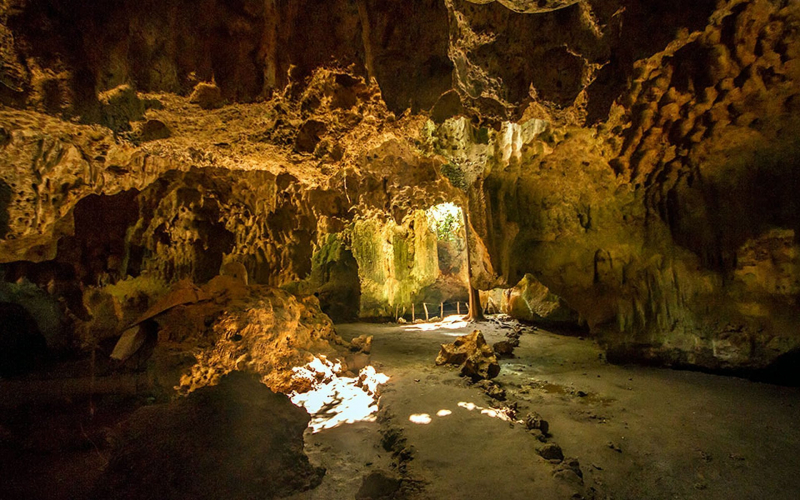
Photo: kenyageographic.com Video: Where is Vivienne? -
The Meru Museum is an art museum in Meru, Kenya. Its exhibitions are centered on the Meru people's cultural history and activities. The museum building, which served as the District Commissioner Office until 1916, is Meru's oldest stone structure. The Meru Museum agreed to restore the structure to a local museum in 1973.
The Meru Museum originally opened in 1974, after the National Museums of Kenya, Meru County, and Municipal Council finished modifications to the museum structure; the goal of creating this museum was to have a space dedicated to the local history of this region of Kenya.
The museum houses a number of historical artifacts from the Meru culture. Exhibits in the museum include prehistoric stone tools and taxidermied animals. The main museum exhibit is divided into three sections: one dedicated to the history of the Meru civilization, one to human evolution, and one to the natural history of the area of Kenya where the museum is located. Exhibits at the museum also focus on the evolution of various agricultural systems in Kenya.
The Meru Museum's cultural department contains various exhibits of traditional attire, equipment, and weaponry, including arrows, bows, grindstones, and spears. As one of the most beautiful historical sites in Kenya, the museum features a fish pond as well as exhibits on tiny mammals, birds, and reptiles native to this region of Kenya. The museum also has dinosaur exhibits. In addition, the museum displays a statue of Living Mugwe, the Meru people's leader. There is a garden within the museum where medicinal plants endemic to Kenya are kept and protected. There are about 23 plants in the garden, including Aloe secundiflora, Clausena anisata, Commiphora zimmermanii, Dioscorea minutiflora, and Warburgia ugandensis.
Location: Meru, Kenya
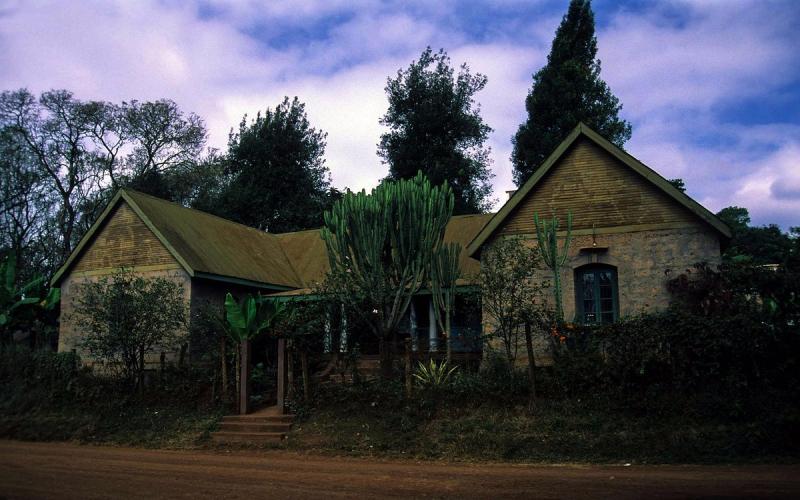
Photo: tripadvisor.com Video: JayDee April -
Lamu Town is a small town on Lamu Island, which is part of Kenya's Lamu Archipelago. Lamu Island is situated 341 kilometers (212 mi) by road northeast of Mombasa that ends at Mokowe Jetty. It is the Lamu County seat and a UNESCO World Heritage Site.
The Lamu Fort, located on the seaside, was built during the reign of Fumo Madi ibn Abi Bakr, Sultan of Pate, and was completed after his death in the early 1820s. Lamu also has 23 mosques, notably the Riyadha Mosque, which was established in 1900, as well as a donkey sanctuary.
Lamu Town was established in the 14th century and has several beautiful examples of Swahili architecture. The old city is designated as "the oldest and best-preserved Swahili village in East Africa" on the World Heritage List. Lamu's population is ethnically diverse, owing to its history as a slave-trading center. Lamu was on the main Arabian commercial routes, hence the population is predominantly Muslim. Tourists in town are expected to dress more than shorts or bikinis in order to respect the Muslim residents.
There are many museums on the island, notably the Lamu Museum, which houses the island's ceremonial horn; other museums focus on Swahili culture and the local postal service. Lamu Fort, Riyadha Mosque, and Donkey Sanctuary are among the town's notable structures.
Location: Lamu County, Kenya
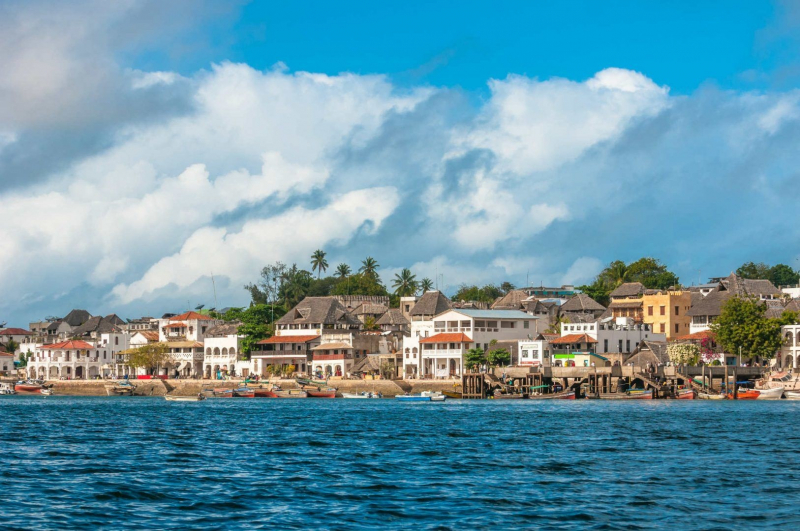
Photo: roughguides.com Video: New Afropolitan -
Fort Jesus is a fort on the island of Mombasa. It was built between 1593 and 1596 by order of King Felipe II of Castille, who also reigned as King Filipe I of Portugal and the Algarves, to secure the Old Port of Mombasa. It was designed by Italian Giovanni Battista Cairati. Fort Jesus was the Portuguese's only fort on the Swahili coast, and it is regarded as the first successful attempt by a Western nation to acquire influence over the Indian Ocean trade.
Cairato, the fort's designer, was influenced by Italian architect Pietro Cataneo, and Gaspar Rodrigues was the master builder. Cairato's final overseas project was the fort. Although Fort Jesus was designed in the Renaissance style, the masonry techniques, building materials, and labor are thought to have been contributed by the indigenous Swahili people. The fort was constructed in the shape of a man (as seen from above) and is roughly square, with four bulwarks at its corners. The fort is regarded as a late Renaissance military fortification masterpiece.
Fort Jesus was designated a national park in 1958, and it was designated a UNESCO World Heritage Site in 2011 as one of the most outstanding and well-preserved examples of 16th-century Portuguese military fortifications. The fort is the most popular tourist destination in Mombasa. In addition to serving as a tourist attraction, the Fort houses various research projects, a Conservation Lab, an Education Department, and an Old Town Conservation Office.
Location: Mombasa, Kenya
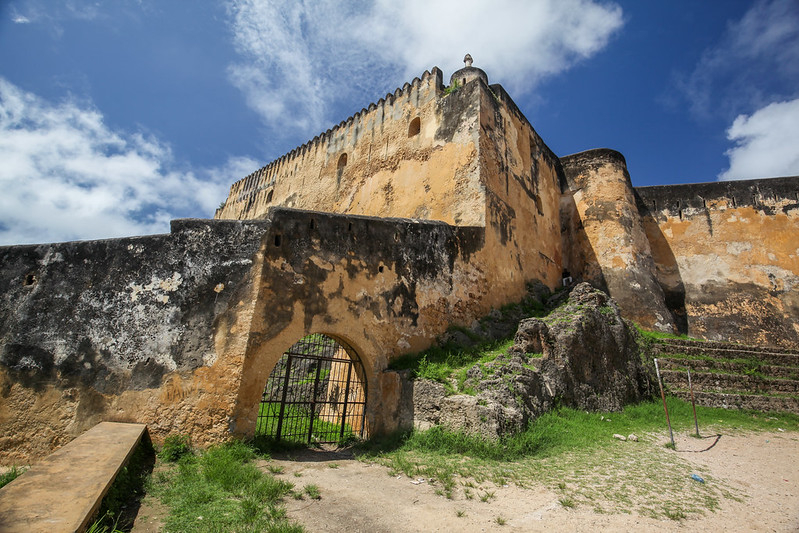
Photo: joshman.com Video: Afrikan Traveller




























